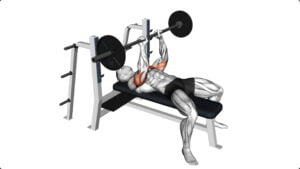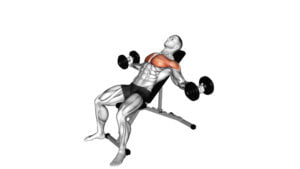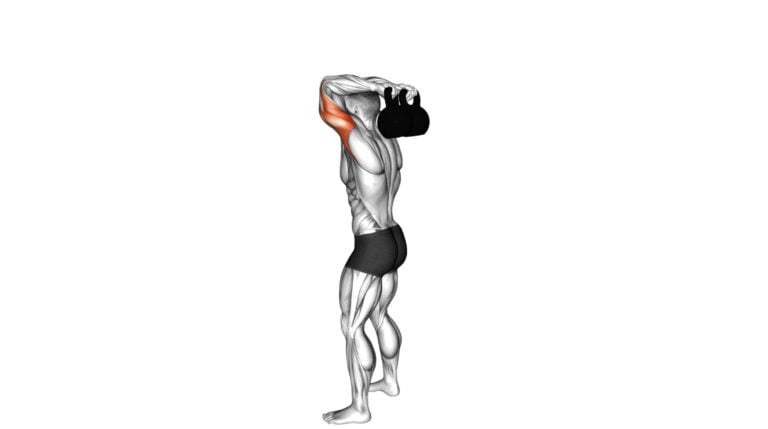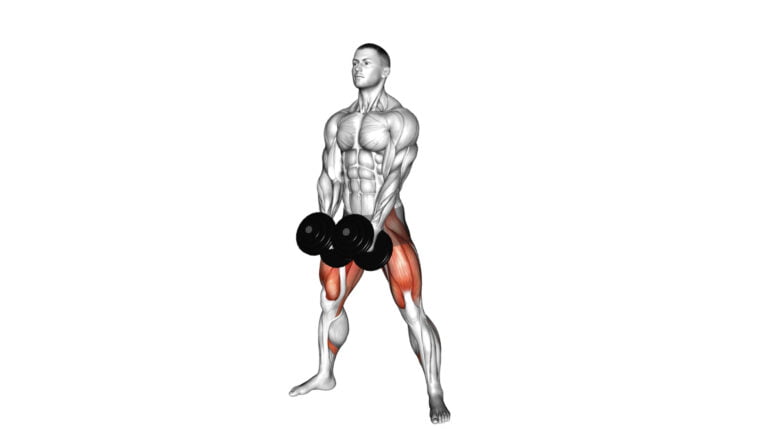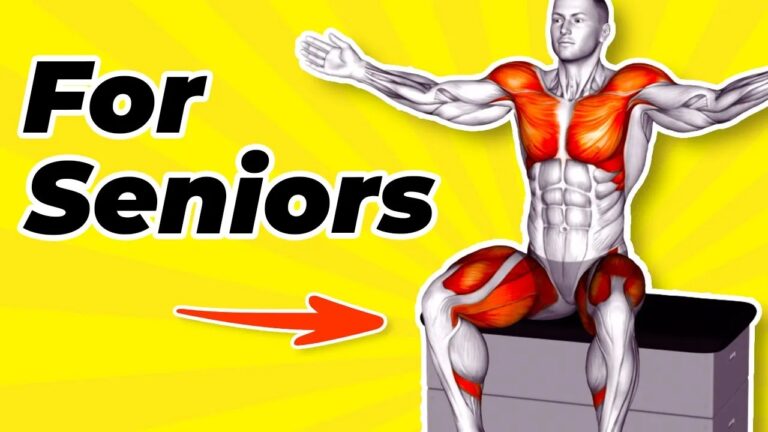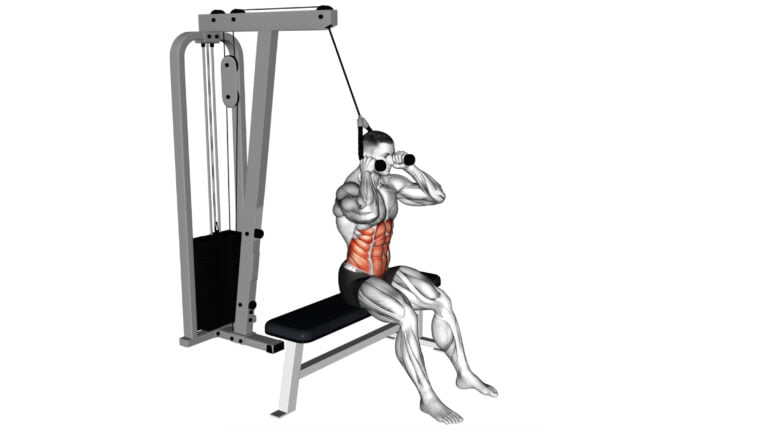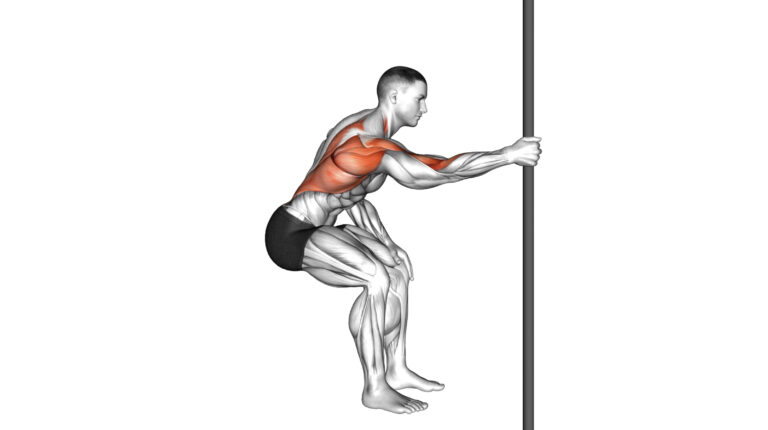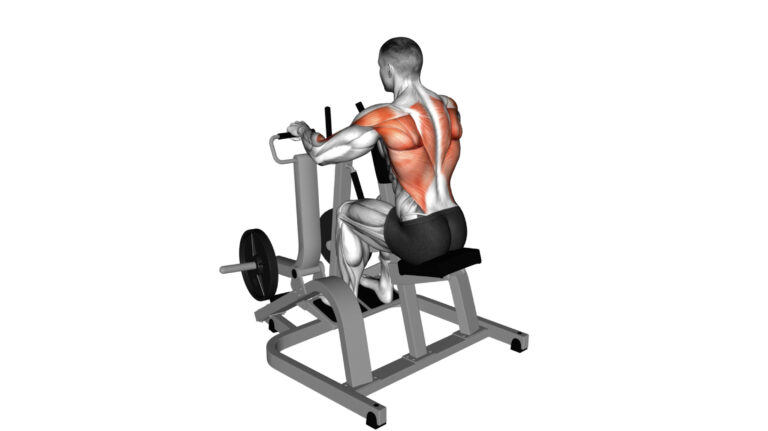Discover The Top 10 Effective Short Head Tricep Exercises
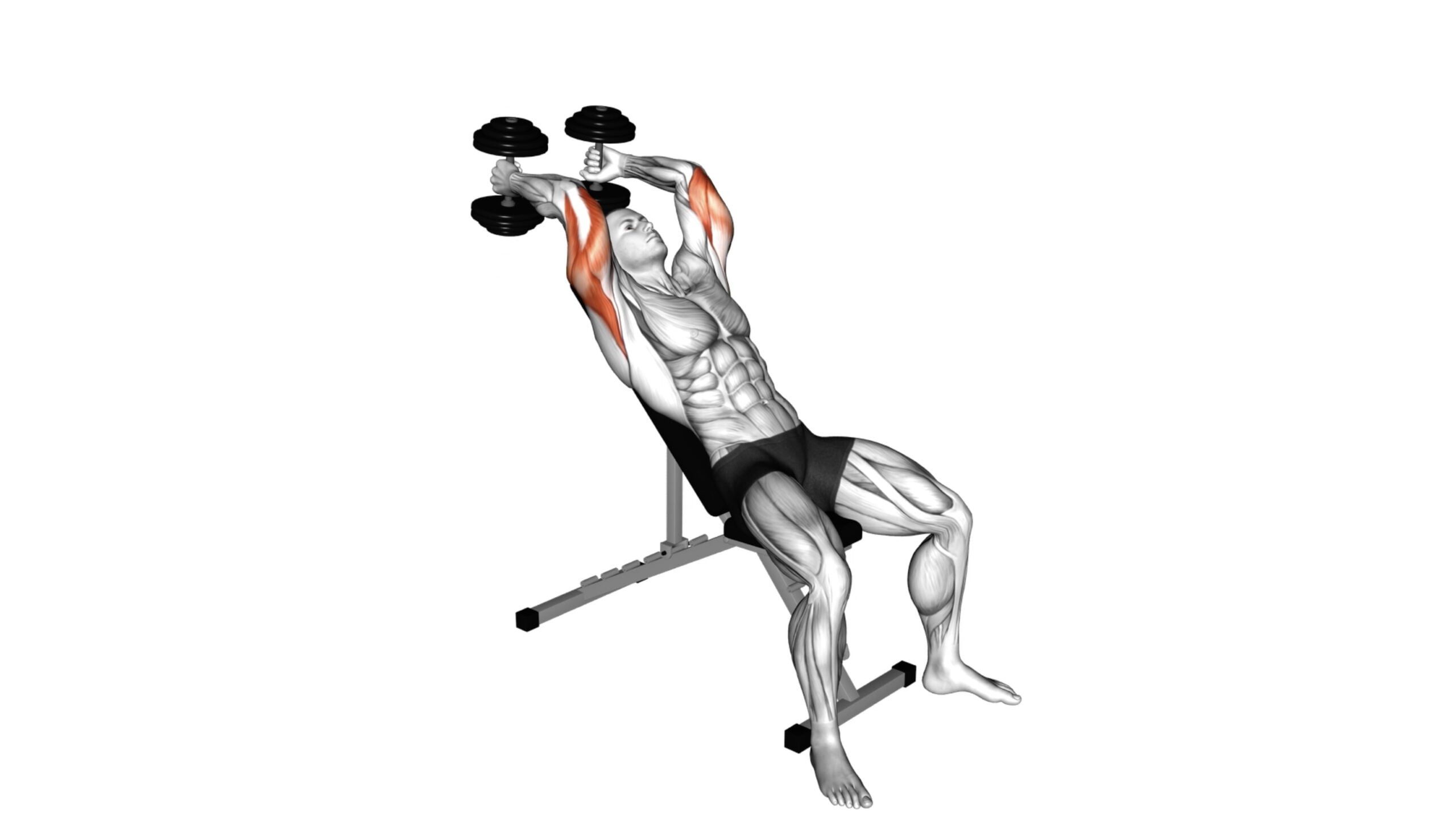
Building a powerful and sculpted upper body isn’t just about developing your biceps; the tricep muscles play a critical role in achieving that coveted arm definition. As someone with years of experience in personal training and fitness coaching, I’ve seen countless individuals overlook their tricep’s lateral head—often dubbed the short head—during workouts.
This oversight can lead to imbalances and hinder overall arm aesthetics and function.
Did you know that the short head of your triceps not only adds depth to your upper arms but also contributes significantly to pushing movements? It’s true—the right mix of exercises can unlock new levels of strength and visual appeal.
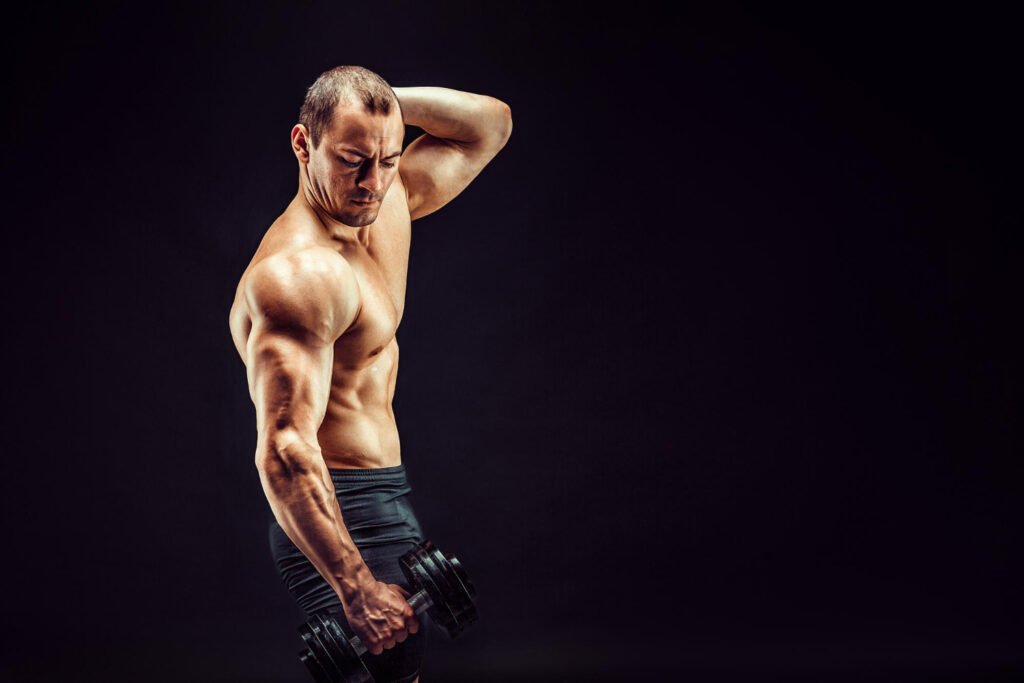
In this guide, we dive into the top 10 effective short head tricep exercises guaranteed to enhance both form and performance. Get ready for gains!
Key Takeaways
- The short head of the triceps, or lateral head, adds depth to your upper arms and significantly contributes to pushing movements. Targeting this muscle is key for balanced arm development.
- A mix of 10 effective exercises like dumbbell decline extensions, cable kickbacks, and overhead presses can isolate and build strength in the short head of the triceps.
- Exercises that target the triceps’ short head are not just about aesthetics; they also boost performance by providing stability during upper body compound movements.
- Correct form and a variety of exercises are essential when focusing on the short head tricep. This ensures comprehensive muscle engagement from different angles for optimal growth.
- Rest and recovery play a vital role in muscle development after targeting the short head of the triceps. Rep ranges between 8-12 with moderate to heavy loads are recommended for hypertrophy training in this area.
The Importance of Training the Short Head of Tricep
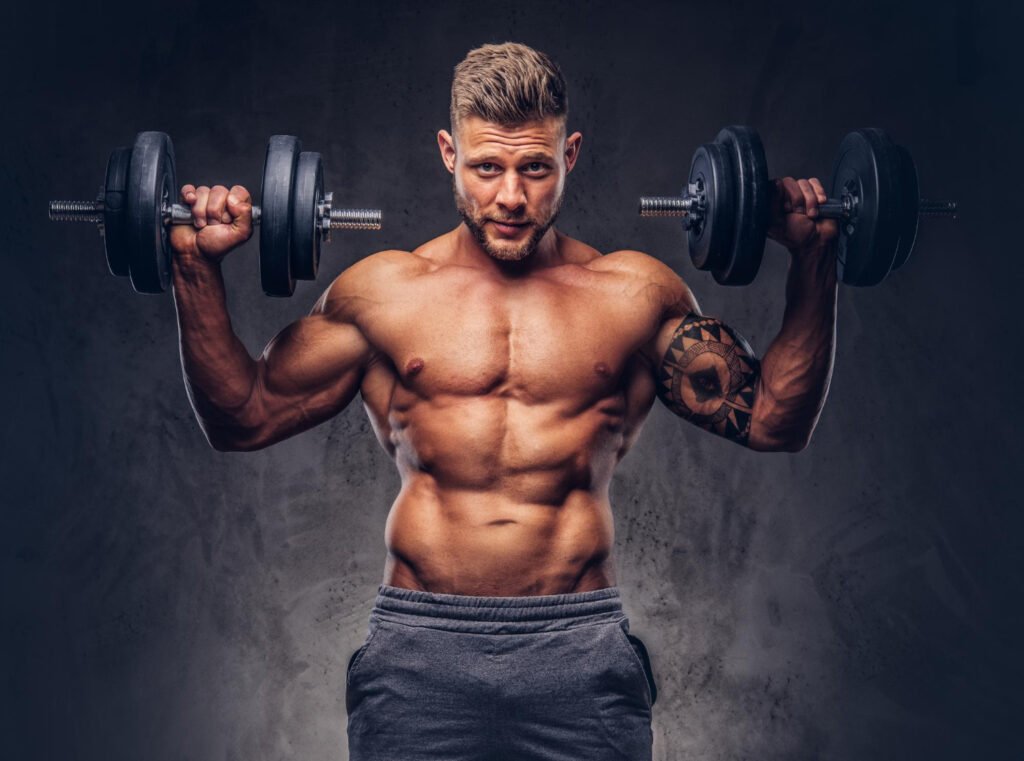
Training the short head of the tricep is essential for achieving a well-rounded and balanced arm development, both in terms of aesthetics and performance. While many exercises target the long head of the tricep, it’s important to also focus on the short head to fully maximize overall tricep strength and size.
Aesthetics
A solid tricep routine does more than boost your strength; it sculpts a muscular, well-defined upper arm that stands out. Building the short head of your triceps brachii gives your arms that coveted horseshoe shape, making every t-shirt a chance to showcase the results of your dedication.
With targeted exercises like skull crushers and tricep dips, you can create an impressive silhouette that’s not only about power – it’s also about creating a balanced physique that catches eyes.
Focusing on aesthetics goes hand in hand with boosting confidence both inside and outside the gym. As you press up those barbells and perfect each diamond push-up, you’re carving out definition where it matters most.
Consistent training paired with a balanced diet leads to muscle growth in all the right places, enhancing your overall appearance. Stronger triceps aren’t just for show – they contribute to a symmetrical look that complements all body types, elevating your physical presence to new heights.
Performance
Strong triceps are not just for show; they’re crucial for increasing overall upper body strength. Whether you’re bench pressing or pushing up against gravity during a push-up, well-developed short head tricep muscles contribute to greater stability and power.
With each lift, these muscles assist the elbow joints and shoulders in executing movements more efficiently, translating into better performance across various exercises.
Training your short head helps refine compound movements like bench presses or shoulder presses by providing additional force. Imagine nailing heavier lifts with confidence as your triceps brachii become more capable of handling intense workouts.
Focusing on exercises like diamond push-ups or tricep extensions can lead to improvements not only in isolation exercise but also when performing multi-joint compound exercises where the tri’s act synergistically with other muscle groups for maximum effect.
The Anatomy of the Triceps
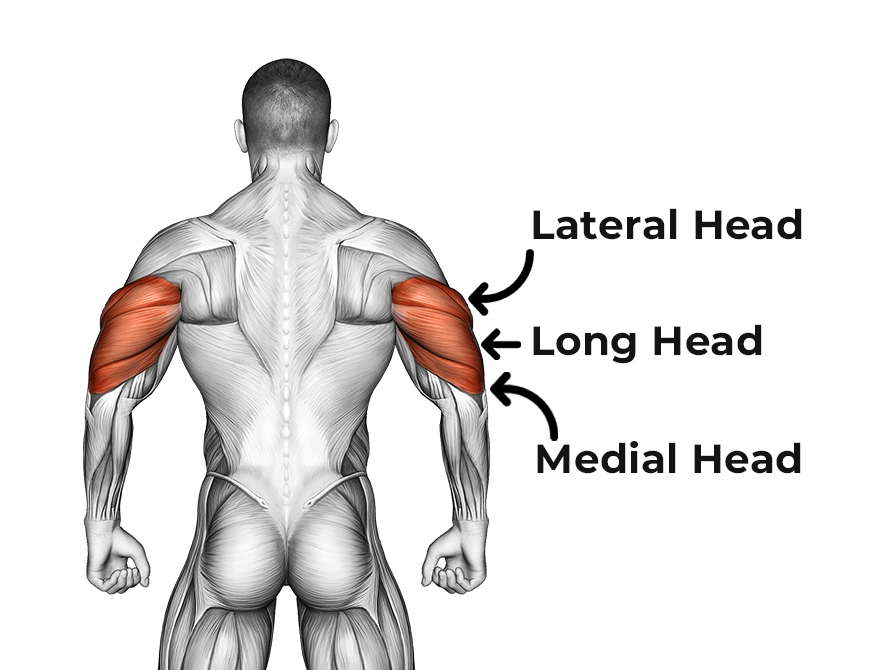
The triceps brachii muscle is composed of three heads: the lateral (short) head, the long head, and the medial head. Each head has its own specific attachment points and functions in arm movement.
Understanding the anatomy of the triceps can help you target and train the short head effectively.
Functions of the Triceps
Your triceps brachii muscle plays a crucial role whenever you push something away from your body or straighten your arm. This three-part muscle, anchored to the shoulder joint and ulna in your forearm, is a powerhouse for upper-body strength.
It’s not just about having impressive looking arms; strong triceps ensure that tasks like lifting weights overhead are done safely and efficiently.
Engaging this muscle affects how well you perform in sports or during resistance training, making everything from throwing a ball to performing diamond push-ups smoother and more powerful.
Properly trained triceps also support the elbow joints and help maintain healthy shoulders by balancing out the strength of the muscles around these areas. Whether it’s flexing during weightlifting repetitions or keeping your humerus bone stable while carrying heavy bags, your triceps are always on duty, promoting overall arm function and mobility.
The Lateral (Short) Head of the Triceps
The lateral head of the triceps is responsible for adding width and thickness to the upper arm. When well-developed, it creates a rounder, more defined appearance from both the front and back.
It is essential for overall arm aesthetics and contributes significantly to pressing power in movements like bench presses and push-ups.
You can isolate the lateral head through specific exercises that target this area directly, such as overhead triceps extensions and cable kickbacks. Prioritizing these exercises in your training routine will help you achieve balanced triceps development with a focus on the lateral head.
Can You Isolate the Lateral (Short) Head?
Transitioning from understanding the anatomy of the triceps to practical application, it’s crucial to address isolating the lateral (short) head. Isolating this specific tricep muscle can be achieved through targeted exercises that emphasize its activation and development.
While complete isolation may not be possible due to overlapping functions with other heads, certain movements and techniques prioritize recruitment of the lateral head for enhanced growth and definition.
10 Effective Short Head Tricep Exercises
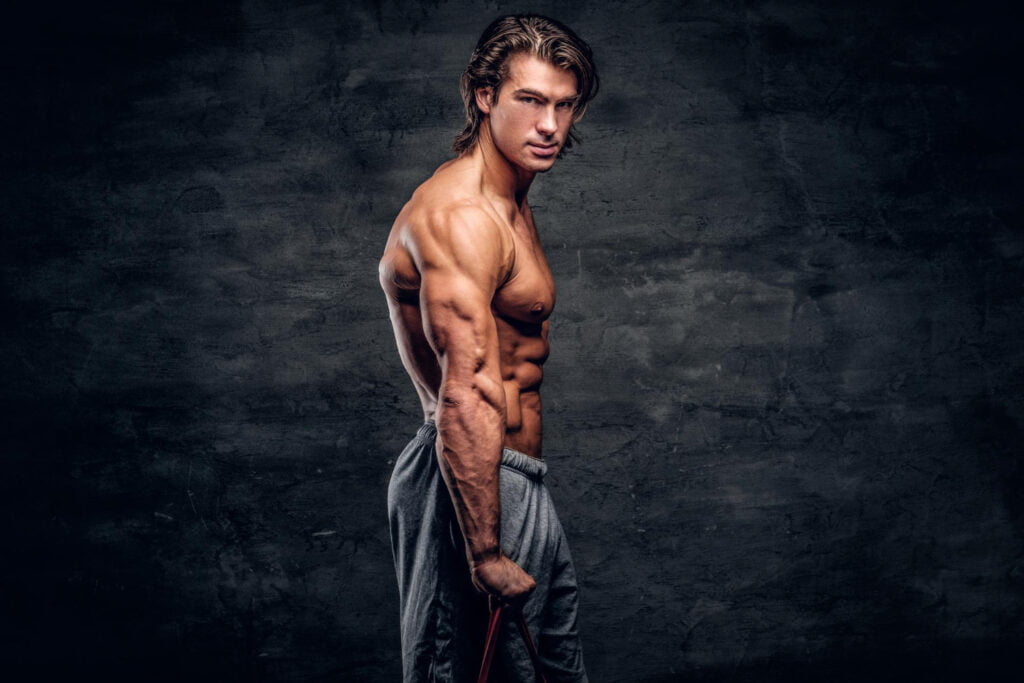
Get ready to target your short head tricep with these 10 effective exercises. From dumbbell extensions to cable kickbacks, you’ll be equipped with a range of movements to add strength and size to this specific part of your triceps.
1. Dumbbell Decline Triceps Extension
With the dumbbell decline triceps extension, you can effectively target your triceps. Start by lying on a decline bench and holding a dumbbell in each hand above your chest with palms facing each other.
Lower the dumbbells toward the sides of your head while keeping your upper arms stationary, then extend your arms back to the starting position.
Using proper form and controlled movements is crucial to isolate and engage the short head of the triceps maximally. This exercise also recruits stabilizing muscles such as the shoulders and core, making it an efficient addition to any tricep workout routine.
2. Dumbbell Close-grip Press
Transitioning from the Dumbbell Decline Triceps Extension to the Dumbbell Close-grip Press, this exercise offers a targeted approach to engaging the short head of the triceps. Using dumbbells for this exercise enables a greater range of motion compared to using a barbell, emphasizing muscle activation in each arm independently.
When performing the Dumbbell Close-grip Press, lie on your back on a flat bench and hold two dumbbells directly above your chest with your palms facing inward. Slowly lower the weights toward your chest while keeping your elbows close to your body, then press them back up to complete one repetition.
This movement effectively isolates and engages the short head of the triceps, promoting strength and hypertrophy in this area.
3. Dumbbell Incline Triceps Extension
Using dumbbells, perform incline triceps extensions by lying on an incline bench and holding the dumbbells directly above your head. Lower the dumbbells behind your head, keeping your upper arms stationary, and then extend them back up to the starting position.
Ensure controlled movements to effectively target the short head of the triceps.
For optimal results, maintain proper form throughout each repetition and focus on feeling a deep stretch in the triceps during each lowering phase. Adjusting the incline angle can also provide variations in targeting different parts of the triceps.
4. Dumbbell Lying One Arm Pronated Triceps Extension
With the dumbbell lying one arm pronated triceps extension, you can effectively isolate and target the lateral head of your triceps. Begin by lying on a flat bench with a dumbbell in one hand, keeping your arm perpendicular to the floor.
Lower the dumbbell behind your head while keeping your upper arm stationary, then extend your elbow to lift it back up.
This exercise provides a deep stretch and full contraction for maximum muscle engagement. It’s an excellent choice for those looking to build strength and size in the short head of their triceps, helping to create a well-rounded and defined upper arm appearance.
5. Cable Alternate Triceps Extension
To perform the cable alternate triceps extension, stand facing the cable machine with your feet shoulder-width apart. Grasp the handle with an overhand grip and position your arm against your body.
Extend your arm down until it’s straight, while keeping your upper arm stationary. Slowly return to the starting position and repeat with the opposite arm for a complete set.
This exercise targets the lateral head of the triceps, helping to build strength and definition in this specific area. By alternating arms, you engage each tricep individually, ensuring balanced development.
6. Cable kickback
The cable kickback is a potent isolation exercise that directly targets the short head of the triceps. Begin by attaching an ankle cuff to a low pulley cable machine and then fasten it around your ankle.
With your upper body leaning forward and using proper form, extend your arm backward until fully extended, feeling the contraction in your triceps throughout the movement.
Executing cable kickbacks helps to strengthen and develop the short head of the triceps while also engaging other muscles for stability and support during this focused movement. It’s essential to keep a controlled pace and emphasize squeezing at full extension for optimal results in building strength and muscle definition in the targeted area.
7. Cable Kneeling Triceps Extension
The cable kneeling triceps extension is an effective exercise for targeting the lateral head of the triceps. To perform this exercise, attach a rope handle to a high pulley and kneel in front of it.
Grasp the rope with an overhand grip and bring your elbows close to your head. Extend your arms downwards, straightening your elbows while keeping them in place next to your head. Squeeze at the bottom of the movement before slowly returning to the starting position.
Engaging in cable kneeling triceps extensions can help strengthen and sculpt the short head of your triceps, contributing to well-rounded arm development. By incorporating this exercise into your routine, you can effectively isolate and work this specific area of your upper arms while also engaging other muscles that contribute to overall upper body strength.
8. Kettlebell Overhead Triceps Extension
Transitioning from the cable kneeling triceps extension, the kettlebell overhead triceps extension is a dynamic and effective exercise for targeting the short head of the triceps. Hold a kettlebell with both hands while standing upright, then raise it overhead.
Keeping your upper arms close to your ears, slowly lower the kettlebell behind your head by bending your elbows. Extend your arms back up to complete one repetition.
Executing this exercise engages and strengthens the lateral (short) head of the triceps as well as stabilizing muscles in your shoulders and core. It’s essential to maintain proper form throughout to ensure maximum benefit and minimize injury risk.
9. Barbell Seated Overhead Triceps Extension
After targeting the triceps with kettlebell overhead extensions, transition to barbell seated overhead triceps extensions for an effective variation. Sit on a workout bench or chair, ensuring your back is straight and secure, holding the bar with a narrow grip behind your head.
Engage your core and extend the bar above your head until your arms are fully extended while keeping your elbows close to your ears. Lower the bar behind you in a controlled manner by bending at the elbows, feeling a deep stretch in your triceps before extending again.
This exercise effectively isolates and activates the short head of the triceps for optimal growth and strength gains.
10. Barbell Incline Triceps Extension Skull Crusher
Transitioning from the seated position to a different form of extension exercise, the barbell incline triceps extension skull crusher adds variation and intensity to your regimen. This movement effectively targets the triceps while engaging stabilizing muscles in your shoulders and chest.
By lying on an inclined bench with the barbell above your forehead, you extend your arms to lower the weight towards your head, then raise it back up. It’s essential to maintain control throughout this exercise to avoid injury and optimize muscle engagement.
Executing proper form during this movement is crucial for avoiding strain on other muscle groups and maximizing isolation of the triceps. Additionally, keep in mind that controlling both phases of lowering and lifting will aid in building strength within a safe range of motion.
Tips and Techniques for Targeting the Short Head Tricep
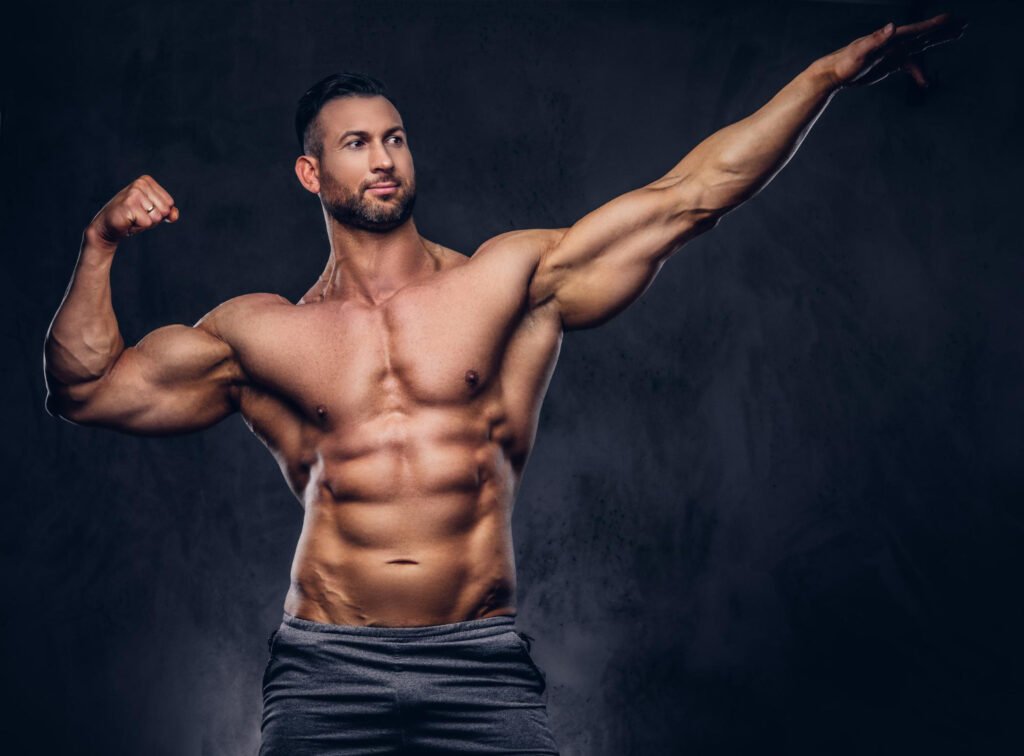
When it comes to targeting the short head tricep, prioritizing lateral head exercises and including multiple exercises in your workout routine can help maximize growth and strength.
Using proper form and variations, allowing for rest and recovery, as well as finding the best rep range and load are also essential for effective short head tricep training.
Prioritizing lateral head exercises
Prioritize lateral head exercises to effectively target the short head of your triceps. These exercises, like cable kickbacks and dumbbell decline triceps extensions, specifically engage the lateral (short) head of the triceps.
By incorporating these targeted movements into your workout routine, you can ensure comprehensive development of this muscle group.
Engaging in multiple lateral head exercises not only helps in isolating and strengthening the short head of your triceps but also contributes to a balanced and well-defined arm appearance.
Including multiple exercises
For optimal development, incorporate a variety of exercises that target the short head tricep. Experiment with different movements and equipment to challenge the muscles from various angles.
This approach helps prevent plateaus and ensures well-rounded growth.
Engaging in a diverse range of exercises also recruits different muscle fibers within the short head tricep for more comprehensive strength and size gains. Variety can stimulate greater overall progress, promoting balanced muscle development throughout your fitness journey leading to improved performance and aesthetic appeal.
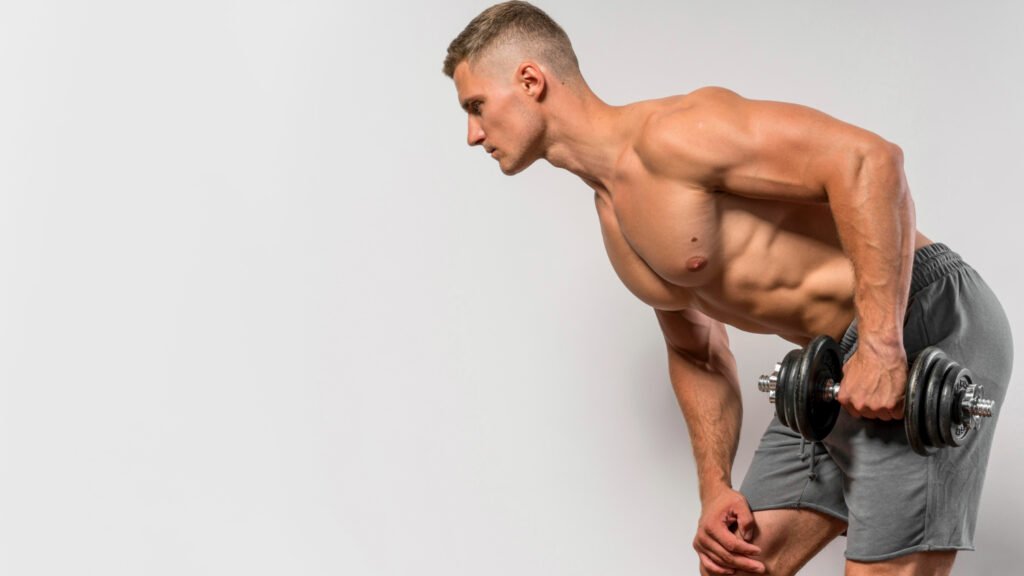
Proper form and variations
When performing tricep exercises, it’s crucial to maintain proper form. Keep your elbows close to your body during extensions and presses, engaging the targeted short head triceps muscles effectively.
Avoid excessive swinging or jerking motions, as this could lead to overtraining or risk of injury.
Variations in grip width and arm positioning can also enhance the effectiveness of your short head tricep workouts. Experiment with different hand placements on dumbbells or cables to target various angles of the triceps.
Additionally, incorporating changes in tempo and rep ranges can help engage the short head triceps from multiple angles for optimal muscle development.
Allowing for rest and recovery
Rest and recovery are crucial for the development of any muscle group, including the triceps. After a challenging workout targeting the short head tricep muscles, it’s essential to give them time to repair and grow stronger.
Incorporating rest days into your training schedule allows your muscles to recover from the stress of exercise and adapt to new demands. Adequate rest also helps prevent overtraining, which can lead to decreased performance and increased risk of injury.
During periods of rest, your body repairs damaged muscle fibers and replenishes energy stores, promoting muscle growth and improving overall strength. Moreover, getting sufficient sleep is equally important as it supports hormone regulation necessary for muscle repair, enhancing recovery after intense workouts.
Best rep range and load
Allowing for rest and recovery is essential to maximize the benefits of short head tricep exercises. When it comes to determining the best rep range and load, it’s crucial to focus on moderate to heavy weights and aim for 8-12 repetitions per set.
This range provides an optimal balance between muscle growth and strength development while ensuring that you are challenging your triceps sufficiently. Additionally, incorporating progressive overload by gradually increasing the weight lifted over time can help stimulate continuous muscle adaptation and growth.
By adjusting your training volume intelligently, you can effectively target the short head of your triceps for impressive results.
Conclusion
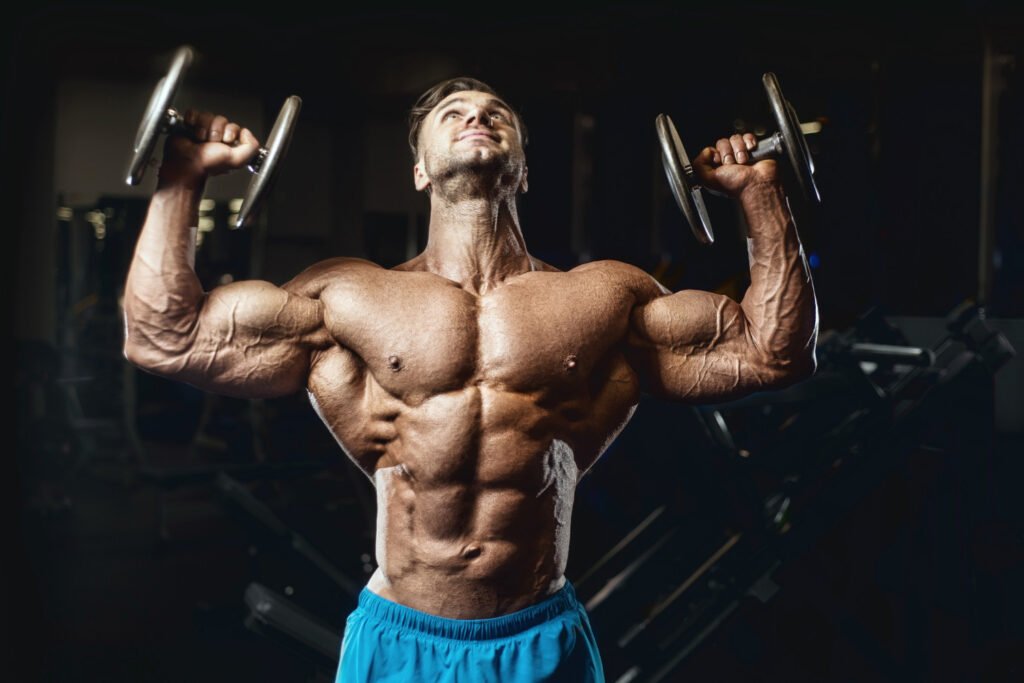
In conclusion, mastering the top 10 effective short head tricep exercises is key for sculpting and strengthening your triceps. By including a variety of exercises that specifically target the short head, you can optimize your training for aesthetic appeal and improved athletic performance.
Implementing these targeted exercises with proper form and technique can lead to notable improvements in your tricep development. Explore further resources such as personalized training programs or professional guidance to elevate your progress in this area.
Ultimately, embracing these effective exercises will propel you towards achieving well-defined triceps and enhanced overall arm strength.
FAQs
1. What makes diamond push-ups one of the top tricep exercises?
Diamond push-ups target the tricep brachii muscles effectively because the hand position, similar to a diamond shape, shifts the workload from your pecs to your triceps.
2. How does adding weight enhance short head tricep workouts?
Utilizing a dip belt or weighted vest during exercises like dips or push-ups increases resistance, challenging your muscles more and promoting strength in the olecranon process area for better muscle development.
3. Can I build my shoulder joints and triceps with free-weight exercises?
Absolutely! Free-weight exercises allow full range of motion around your shoulder joints and enable focused work on the insertion of your tricep brachii through movements like pressing up with dumbbells.
4. Why are declines bench presses beneficial for targeting my lower triceps?
Decline bench press positions you at an angle that emphasizes tension on the lower part of your triceps near where it connects to the elbow—perfect for defining that section of muscle.
5. What’s essential to remember about form when performing these exercises?
Always keep proper form by ensuring shoulders are pinned back, elbows are aligned with wrists during motions, and maintain controlled breathing throughout—a powerlifter’s trick!
6. Do these exercises require any special equipment besides weights?
Not necessarily! Exercises such as crossbody extensions or roll-ups can be done using just bodyweight or simple equipment like bands; focus on correct movement through scapula adduction and shoulder extension.

Author
Years ago, the spark of my life’s passion ignited in my mind the moment I stepped into the local gym for the first time. The inaugural bead of perspiration, the initial endeavor, the very first surge of endorphins, and a sense of pride that washed over me post-workout marked the beginning of my deep-seated interest in strength sports, fitness, and sports nutrition. This very curiosity blossomed rapidly into a profound fascination, propelling me to earn a Master’s degree in Physical Education from the Academy of Physical Education in Krakow, followed by a Sports Manager diploma from the Jagiellonian University. My journey of growth led me to gain more specialized qualifications, such as being a certified personal trainer with a focus on sports dietetics, a lifeguard, and an instructor for wellness and corrective gymnastics. Theoretical knowledge paired seamlessly with practical experience, reinforcing my belief that the transformation of individuals under my guidance was also a reflection of my personal growth. This belief holds true even today. Each day, I strive to push the boundaries and explore new realms. These realms gently elevate me to greater heights. The unique combination of passion for my field and the continuous quest for growth fuels my drive to break new ground.

